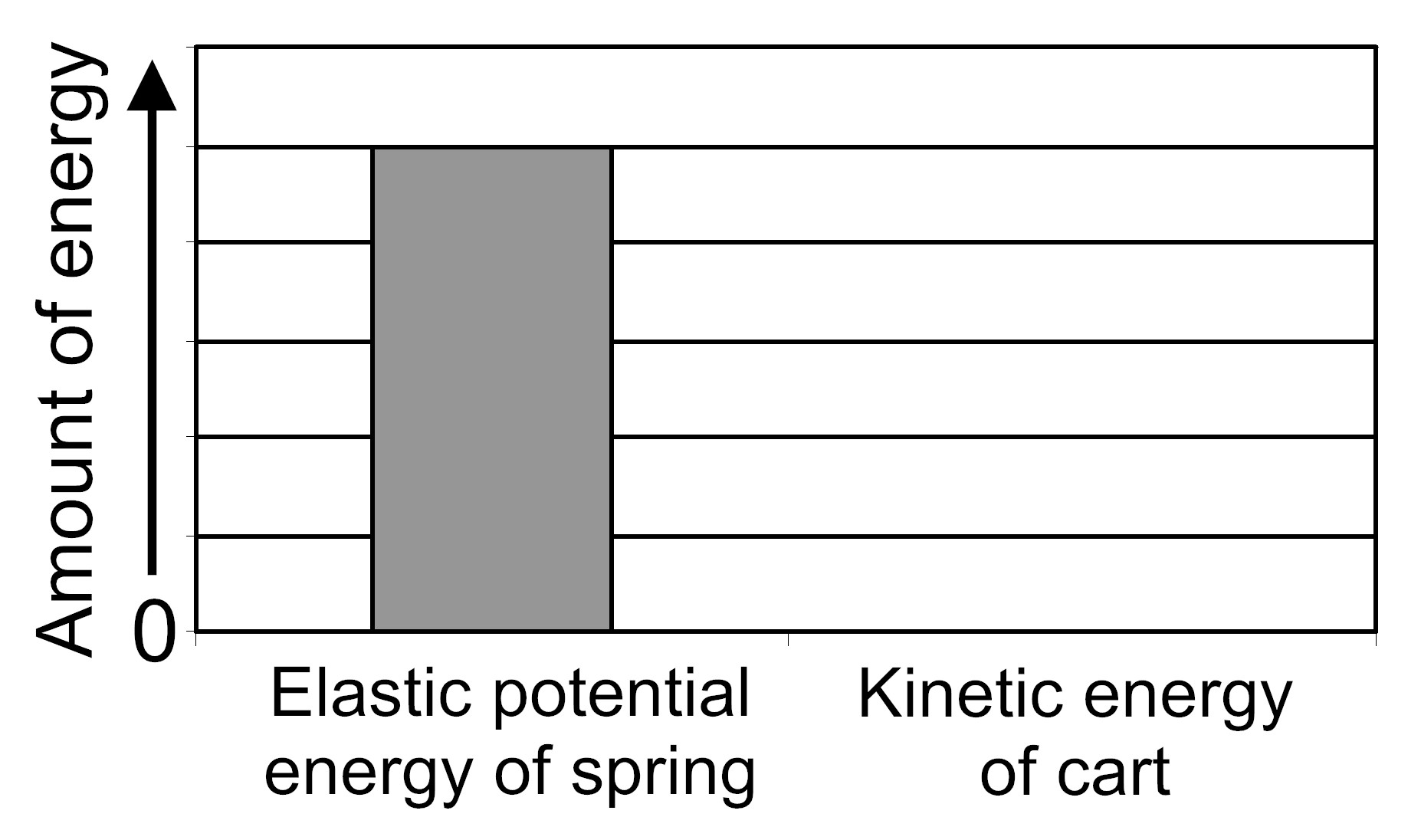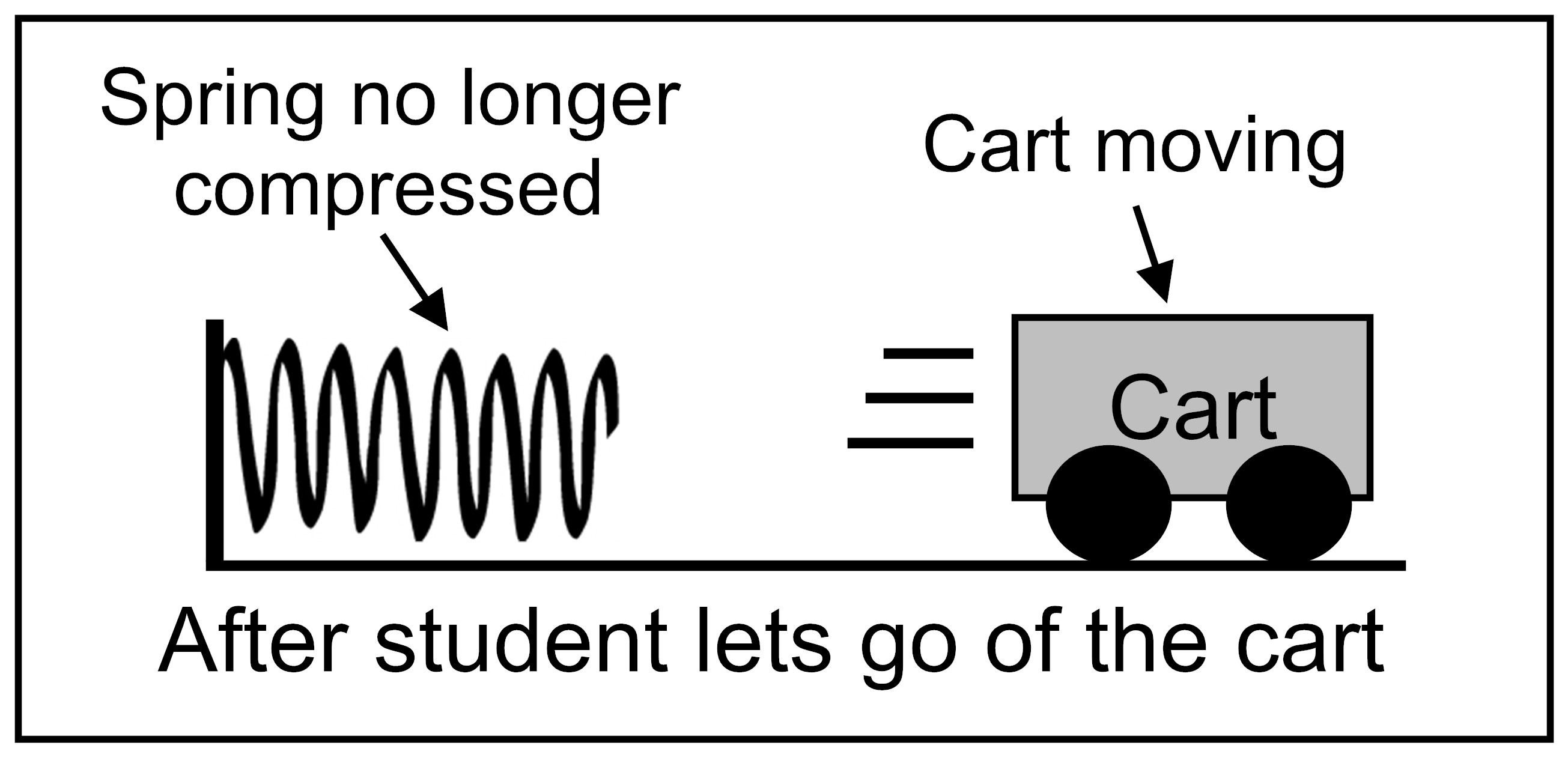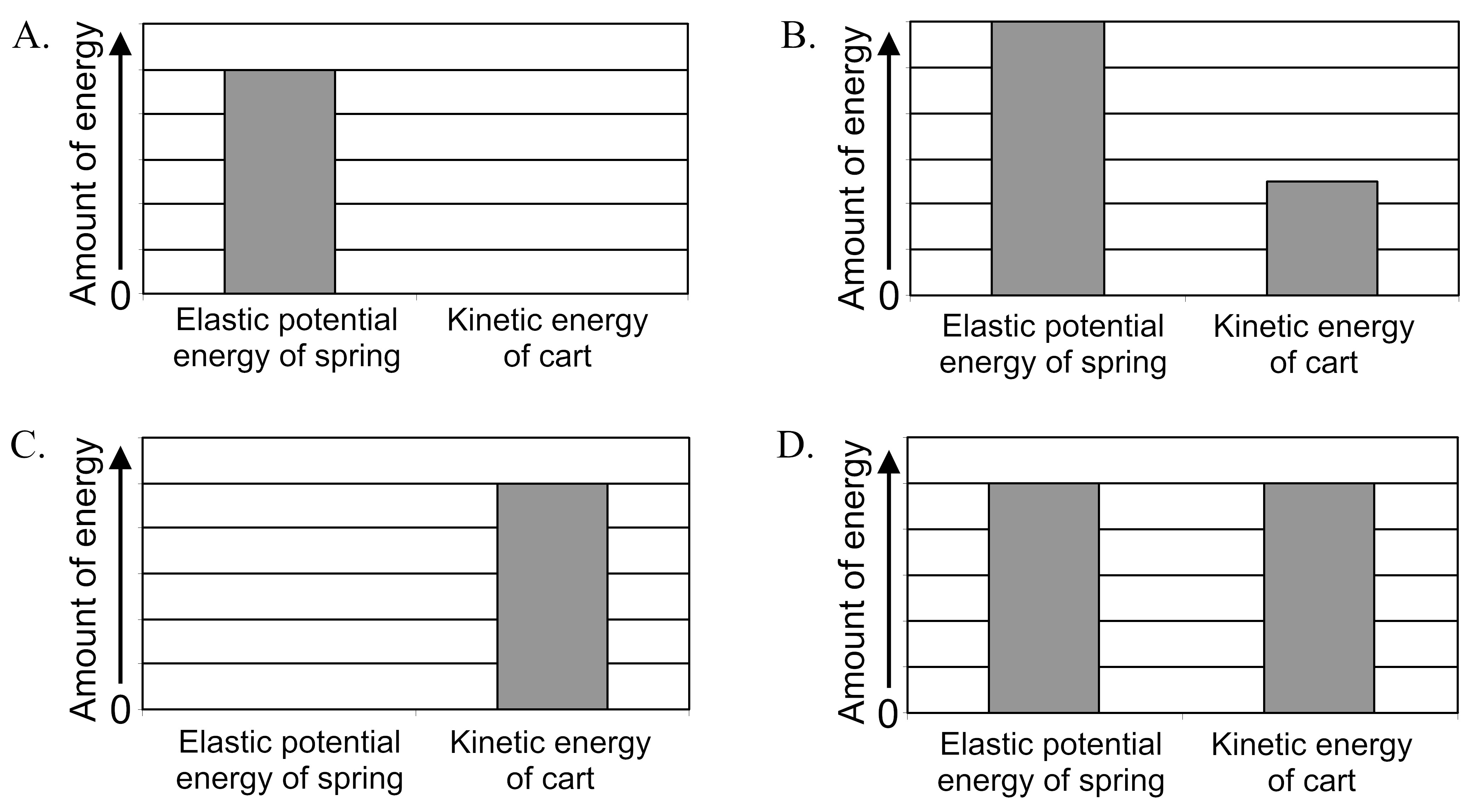Item NG049004: When a spring is used to shoot a cart across the floor, the spring transfers energy to the cart. (This item uses bar graphs to illustrate the amount of elastic energy the spring has and the amount of motion energy the cart has as the cart is rolling across the floor.)
A student compresses a spring and holds a cart next to the spring. The graph shows the amount of elastic potential energy the spring has when it is compressed
and the amount of kinetic energy (motion energy) the cart has before it starts moving.


After he lets go of the cart, the spring pushes the cart, and the cart rolls across the floor.

Which of the following graphs represents the elastic potential energy of the spring and the kinetic energy (motion energy) of the cart when the cart is rolling across the floor and the spring is no longer in contact with the cart? (Assume that no energy is transferred between the spring and its surroundings, and no energy is transferred between the cart and its surroundings.)

- Distribution of Responses

- Scale Score for Item Difficulty
(200[Easy]-800[Difficult]) - 512
- Students Responding Correctly
| Group | Correct | Total | Percent |
|---|---|---|---|
| Overall | 559 | 1538 | 36% |
| Grades | |||
| 4–5 | N/A | N/A | N/A |
| 6–8 | 295 | 884 | 33% |
| 9–12 | 264 | 654 | 40% |
| Gender | |||
| Male | 258 | 716 | 36% |
| Female | 291 | 795 | 37% |
| Primary Language | |||
| English | 517 | 1411 | 37% |
| Other | 33 | 103 | 32% |
- Disciplinary Core Ideas
- PS3.A Motion energy is properly called kinetic energy; it is proportional to the mass of the moving object and grows with the square of its speed.
PS3.A A system of objects may also contain stored (potential) energy, depending on their relative positions. - NRC Framework
- PS3.C Patterns of motion, such as a weight bobbing on a spring or a swinging pendulum, can be understood in terms of forces at each instant or in terms of transformation of energy between the motion and one or more forms of stored energy.

